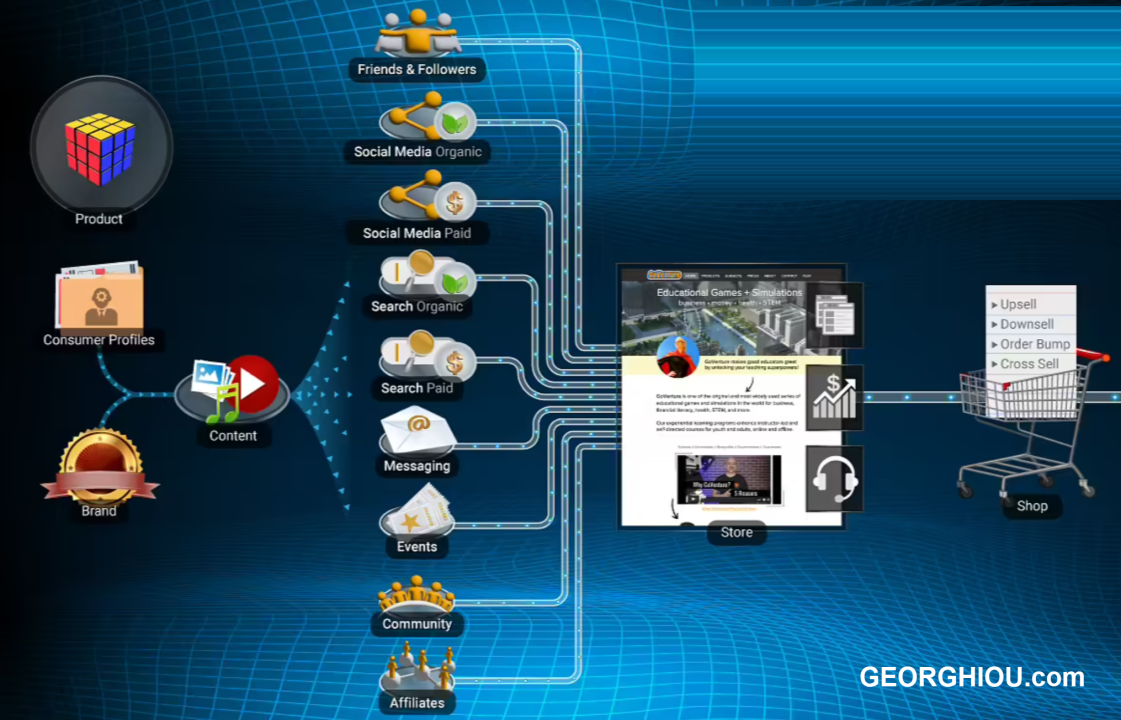
Designing a Digital Marketing Simulation
I'm designing a digital marketing simulation — I'm going to share what inspired the idea, the instructional-design thinking I'm applying, and the reasons why.
I hope you may find this helpful in your work.
Update Dec 2022: The program described in this article is now available at GoVenture.net/dm
Experiential Learning
More specifically, I'm designing an experiential learning activity that teaches digital marketing using:
Narrative story
Microlearning
Simulation
These are three design methods I have written about in detail in previous issues of this newsletter. Now, I'm going to illustrate how they can all be integrated together.
Why Digital Marketing?
I'm developing this product at risk — meaning we're funding it completely without a customer ready to buy.
I chose digital marketing because it's a topic that's in demand, and which has become sufficiently complex to benefit from a better training method. Some aspects of digital marketing seem easy at first because the individual concepts are simple to understand. But become complex when combined.
The main challenge for new marketers is trying to create a holistic and cohesive strategy for a digital marketing campaign — how all the pieces of the puzzle fit together. This is sometimes called a digital marketing funnel — and that's the main concept that inspired me to create a simulation-based training program.
What's So Hard About Digital Marketing?
Some people feel like they are "good" at social media (and by extension digital marketing) because they spend a lot of time posting and consuming content. They measure success by views, likes, engagement, and other common metrics.
What many fail to understand is that social media marketing, like any other marketing, becomes very difficult when your objective is to get people to take high-commitment action — like buying a product. There's a huge jump, of Grand Canyon proportions, between getting someone to engage with your content versus paying money to buy what you're selling.
And even if you are successful at getting some of your immediate followers to buy what you're selling, scaling that success to a wider group of people is a monumental task — unless you have millions of dollars to invest in advertising. But then how do you spend all that money while still remaining profitable?
No Right Answers
The other challenge with digital marketing is that many of the key concepts do not have clear answers. It's difficult to teach concepts when there are no right answers. And, it certainly doesn't help that we all grew up with old-school learning methods that graded us on right-and-wrong answers, instead of preparing us for the uncertainty of the real world.
For example, the performance of an ad is dependent on many variables, including the offer being made, headline, text copy, imagery or video, time of day being seen, targeting, and more.
No one knows how to design the perfect ad for a particular offer, for a particular type of customer, at a specific time.
This means:
I can't teach you what the best headline is.
I can't teach you what the best copy is.
I can't teach you what the best imagery is.
Or the best offer.
Or the best people to target.
Or where to place the ad.
Or how many times to place it.
What I can teach you are the generally-accepted principles. But there are plenty of other training resources that do that, so that's not what I want to do.
And, even if I were to perfectly teach you the generally-accepted principles, the reality is that your ad with the pixelated graphic and typo in the headline that breaks all the "rules" may actually perform better than anything else. This is the uncertain nature of modern advertising and marketing.
The solution?
The common practice in modern marketing is to place and test multiple pieces of content and ads. Then identify the top-performing elements and optimize based on the results. This is the objective science of digital marketing — and this is what I need to teach you.
The objective science of digital marketing
Digital Marketing Funnel
The thought process described above helped me determine which aspect of digital marketing needed to be simulated and could be simulated effectively.
The key learning challenges I need to help people with are:
There are no right answers — testing and optimizing are critical.
Putting all the pieces together to create a holistic and cohesive strategy for a digital marketing campaign.
I concluded that simulating the Digital Marketing Funnel would accomplish the above.
A digital marketing funnel is a visual representation of the path that a person takes from the point of discovering that your business or product exists to the end goal of becoming a customer.
Below is an illustration that we created to form the core interface of the simulation module. It guides the learner through this flow:
Using a fictitious product, identify consumer profiles to target.
Define your brand and messaging then create a variety of content.
Distribute that content through nine different traffic channels to drive people to a destination store and then through a shopping process so they become customers.
Receive this newsletter by email —
I'm Mathew Georghiou and I write about how games are transforming education and learning. I also share my experience as an entrepreneur inventing products and designing educational resources used by millions around the world. More about me at Georghiou.com